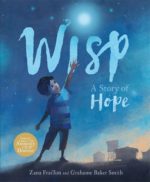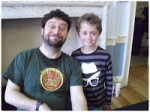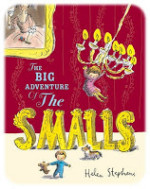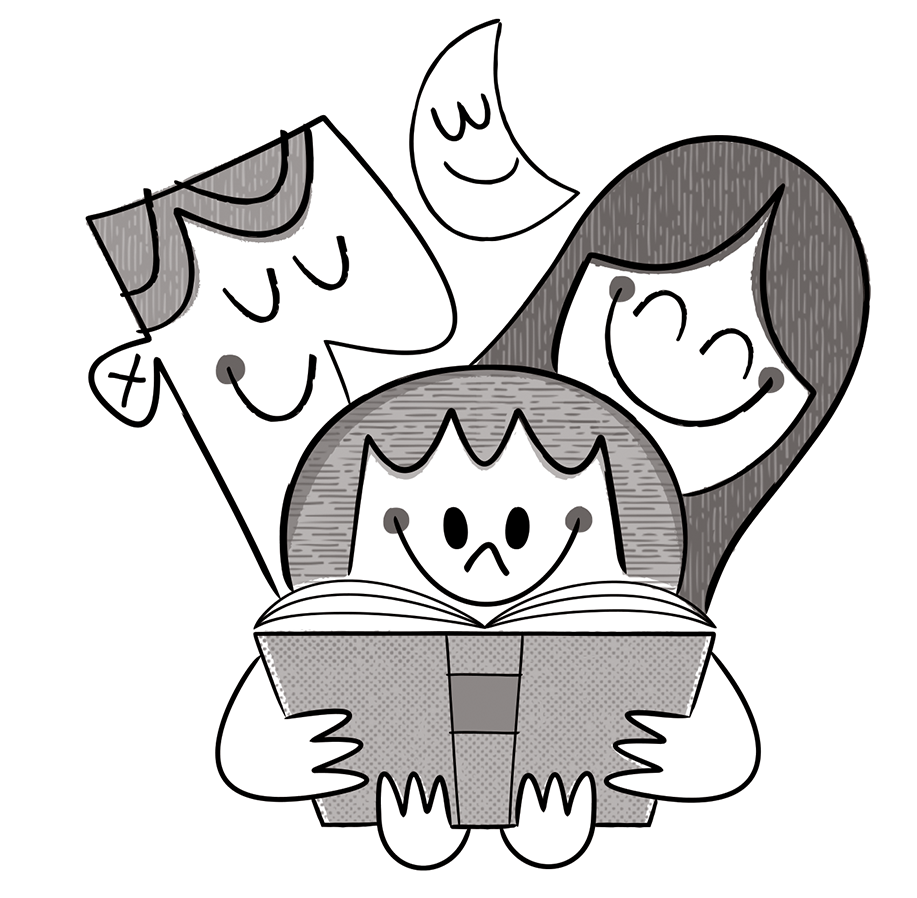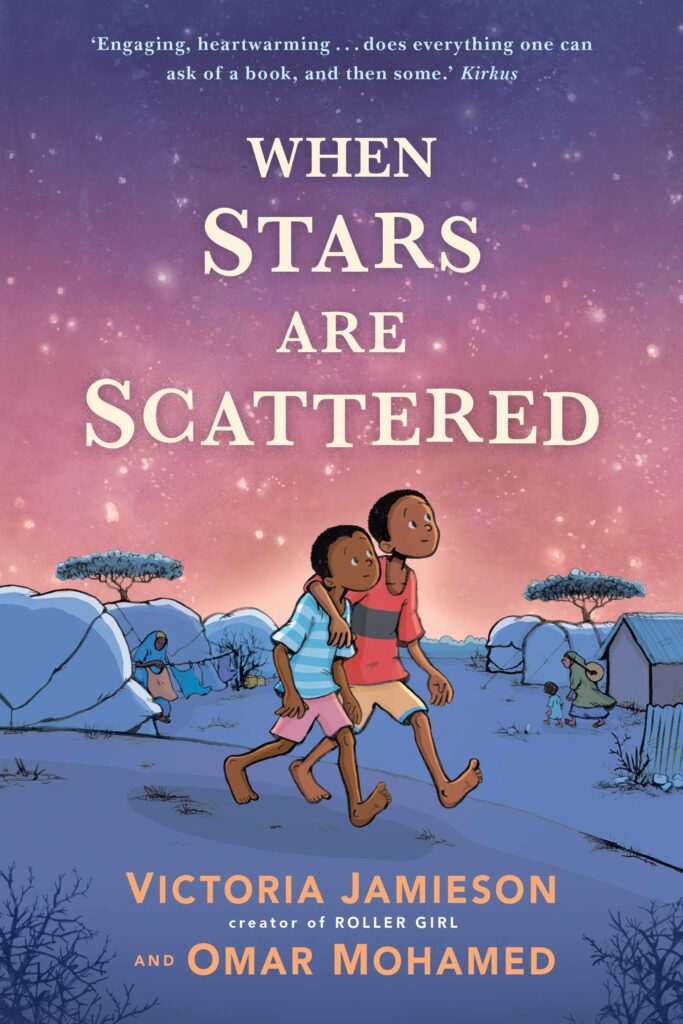
Victoria Jamieson (story & art), Omar Mohamed (story), Iman Geddy (colour)
(Faber Children’s Books)
It is my pleasure to kick off the blog tour that celebrates the release of When Stars Are Scattered, a graphic memoir by Victoria Jamieson and Omar Mohamed, telling Omar and his brother Hassan’s life as Somali refugees in a huge Kenyan refugee camp over six years, before they were awarded the right to go and live in the USA. The brothers’ bond, Omar’s determination to change his and Hassan’s future while constantly struggling with the impact of his decisions on others, including whether to go to school or whether they can ever be reunited with their mother, is always poignant and often heartbreaking, yet ultimately hopeful and always brimming with love and compassion.
Victoria Jamieson’s style is engaging to young audiences and beyond, and together with colourist Iman Geddy, they have created a real sense of place, expressing equally well the two extremes of Omar’s environment: the beauty of the Kenyan surroundings and the vastness and often suffocating nature of the camp. Photographs of Omar, Hassan and their families at the end of the book will help the youngest readers to connect the story to “real” people. This is not just a story; this is someone’s story.
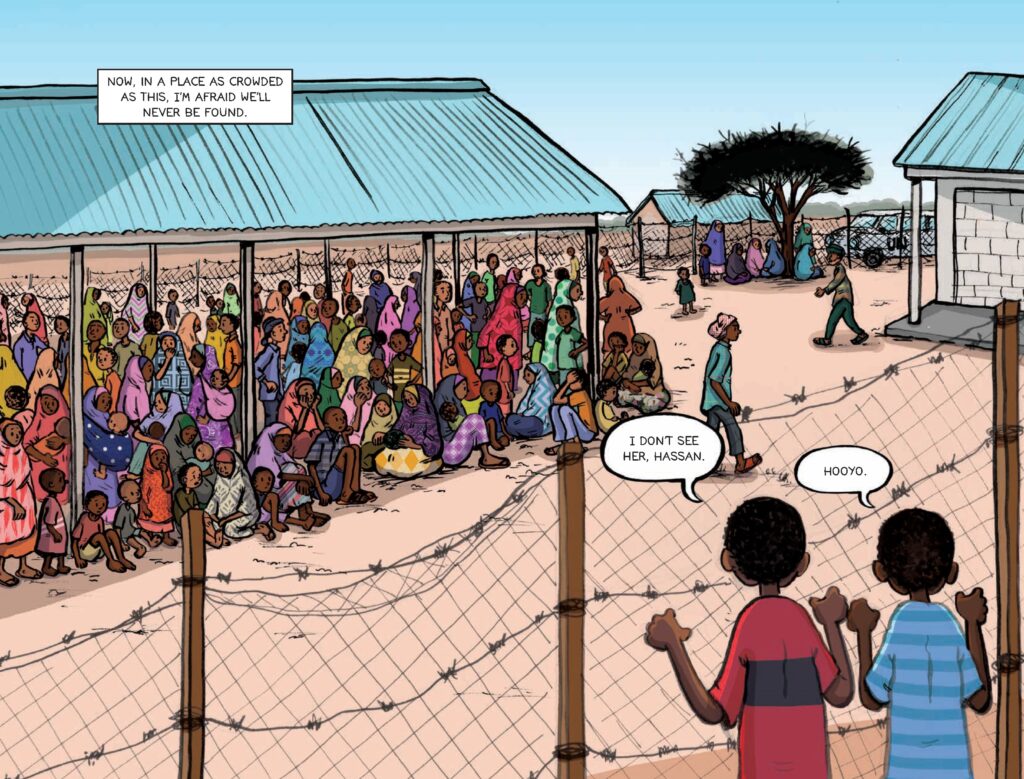
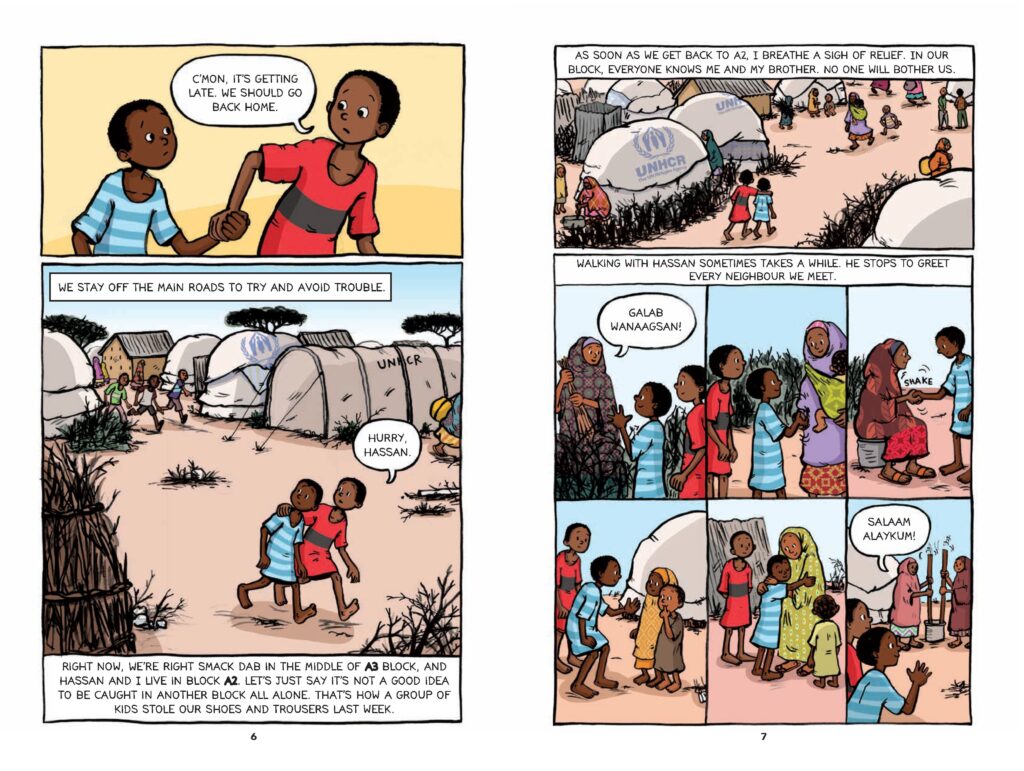
Here is a trailer created by the book’s American publisher:
The graphic form is particularly successful at telling stories of the refugee experience and there have many published in the last few years.
The structure of the medium has a lot to do with how effective graphic novels are at conveying such themes. Very much like picturebooks, graphic novels rely heavily on both text and images to tell the story. Art, as we know, offers a very powerful way of connecting with audiences on an emotional level, and there are many emotions that can be hard to put into words. But some things are also very hard for us to comprehend because they are completely outside of our own social and cultural awareness. The artwork, whether in graphic novel or picturebook, offers points of reference that encourage a better understanding, which in turns develops empathy towards situations other than those we experience. We become privy to life experiences which we would struggle to imagine, let alone understand, without visual clues. But what makes the graphic novel form even more effective is how the panel structure further develops this empathy building. In graphic novels, the narrative is broken down into sequences of panels; graphic conventions allow readers to easily decipher narration, dialogues and inner thoughts; panel shape and form encourages readers to focus on specific aspects of the narrative; flashbacks are more easily weaved into the narratives. Graphic narratives are therefore multilayered and while their structure can be complex, there is no limit on how long a reader can spend on each frame, each sequence, each page. Not only does the graphic form offer sophisticated narrative structures which are not easily reproduced in traditional prose, they also encourage a slower pace of reading, and therefore, as a result, create more cognitive space to develop empathy. Readers can take their time to try to understand a character’s emotions and actions. By allowing readers to take control of the pace, the form creates space for better understanding, as well as a platform to broach more difficult subjects with young audiences in the way that is accessible and comfortable for each reader individually.
When Stars Are Scattered is a stellar example of this. It is honest, harrowing but happy and funny at times. It provides a perfect platform for young audiences to learn about the plea of refugees, while tackling many western stereotypes. It’s an essential addition to any school and classroom library, and would work well in tandem with Zana Fraillon’s The Bone Sparrow , which also depicts life in refugee camps (in that instance, Rohingya refugees in an Australian detention centre).
Don’t forget to follow the rest of the blog tour:
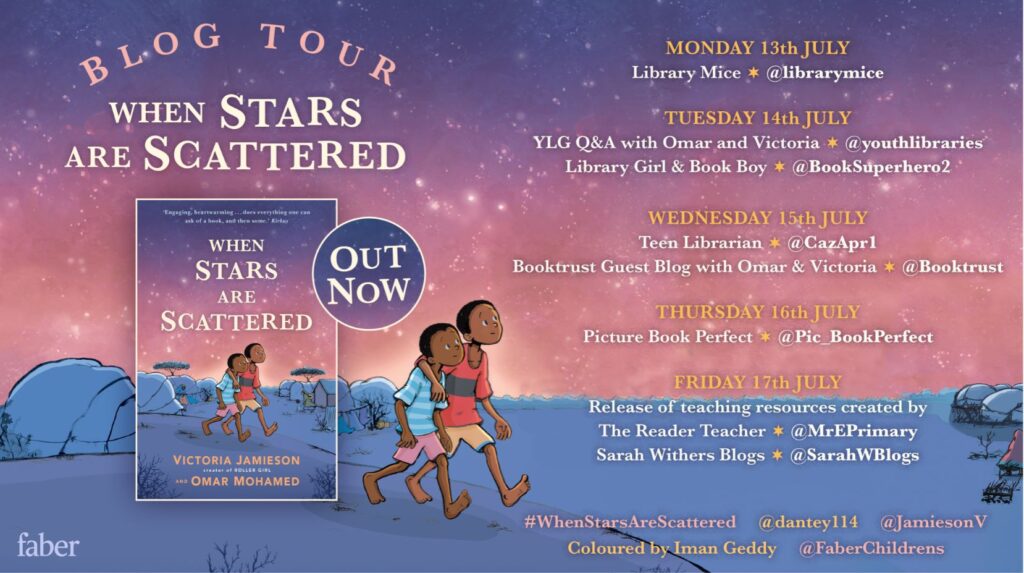
When Stars Are Scattered is out now and you can purchase a copy here:
Source: review copy kindly provided by the publisher.
Some References:
Cousins, Christine and Katie Gallant (2017). “Multiple Media and Empathy.” (https://pdfs.semanticscholar.org/21f4/dd324808b055b277954ab9aa5ff8ee4027e6.pdf )
Lamer, Marissa (2018). “Using Graphic Memoirs to Tackle Tough Topics” ( https://www.hppr.org/post/using-graphic-memoirs-tackle-tough-topics )
Williams, Rachel Marie-Crane (2008). “Image, text, and story: Comics and Graphic Novels in the Classroom”. Art Education, 61(6), 13-19.

